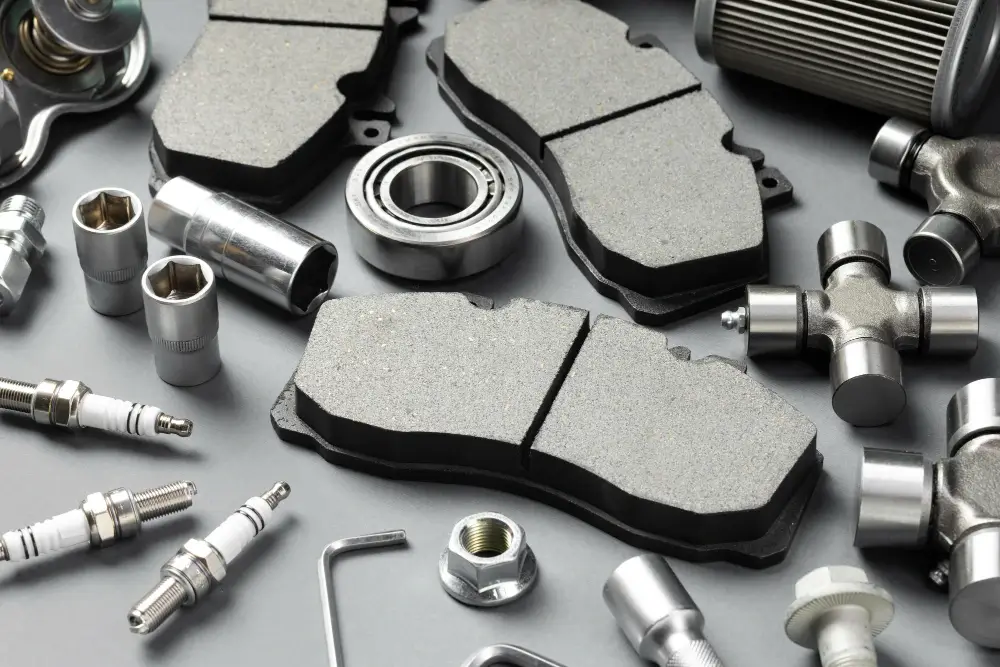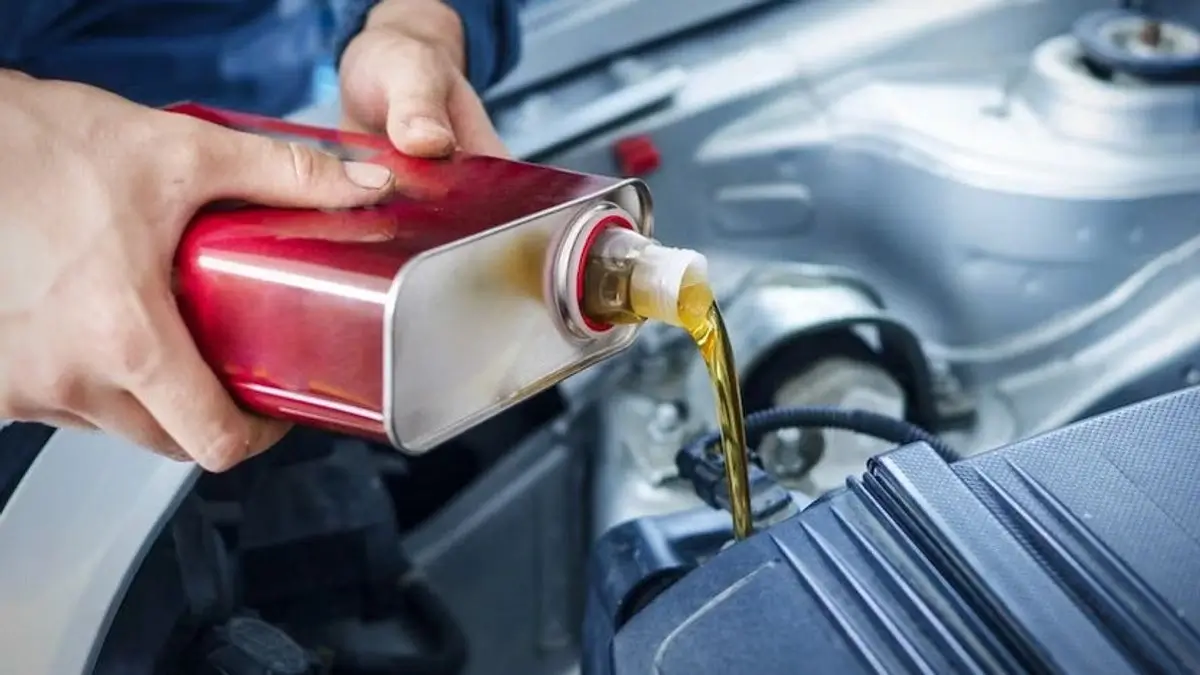
Understand the Function of Car Spare Parts, Their Types, and Components
Car spare parts play a vital role in maintaining performance, safety, and driving comfort. Every component, from the engine, braking system, electrical parts, and more has its own spare parts. Understanding the function of car spare parts is essential to ensure proper maintenance and prevent damage.
Unfortunately, many car owners still lack knowledge about how these parts work and the different types of spare parts in their vehicles. As a result, they often delay replacing worn-out components or choose parts that don’t match the specifications. This not only harms the engine’s performance but also poses risks to road safety.
Through this article, let’s explore the functions of car spare parts along with their types and the components most commonly replaced. This information will help you make smarter choices when selecting the right spare parts and encourage regular maintenance.
Functions of Car Spare Parts You Need to Know
The general function of car spare parts is to maintain the vehicle’s performance so it remains optimal and safe to use. Each component plays a crucial role in ensuring the engine continues to run smoothly. In addition, car spare parts also support driving safety and comfort.
Car spare parts are also essential for repairing or replacing damaged components so the vehicle can function properly again. For example, components in the suspension system help maintain stability and reduce jolts when driving over uneven roads.
Some spare parts serve as lubricants to prevent excessive friction, helping components last longer and avoid damage. Others ensure the electrical system runs smoothly, allowing all electronic features, such as lights, audio, and air conditioning to operate optimally.
Types of Car Spare Parts
There are several types of car spare parts categorized based on their systems. Below are the main types of car spare parts and their functions that every car owner should understand:
Engine Parts
Engine parts are core components that maintain the performance and durability of a car’s engine. They play an essential role in combustion, air and fuel circulation, and regulating mechanical movements within the engine to keep it efficient and powerful.
Regular maintenance and replacement of engine parts are necessary to ensure stable engine performance, fuel efficiency, and to prevent damage. Examples of engine parts include oil filters, spark plugs, timing belts, and pistons.
Suspension & Underbody Parts
Suspension and underbody parts function to maintain stability, comfort, and safety when driving on various road conditions. Examples include shock absorbers, ball joints, and wheel bearings.
The suspension system helps absorb vibrations and impacts when driving over uneven or bumpy surfaces. It also ensures the tires maintain proper traction, making the car easier to control.
Electrical System Parts
Electrical system parts ensure smooth electricity flow throughout the car. This power distribution is needed to start the engine and support various electronic features. The electrical system also contributes to driving comfort and safety, including lighting and sensors that assist the driver.
Examples of electrical spare parts include the battery (the main power source), alternator, lights (headlamps, indicators, brake lights, etc.), and electronic sensors. These electrical components often require regular replacement.
Braking & Safety Parts
Braking and safety parts function to ensure that the car can slow down or stop safely and promptly. These components also help prevent accidents by providing optimal control, especially when braking on slippery roads or during sudden stops.
Examples of braking and safety spare parts include brake pads, ABS sensors, and brake boosters. Brake pads, in particular, are among the most frequently replaced spare parts due to their frequent use.
Transmission Parts
Transmission spare parts function to transfer power from the engine to the wheels with the appropriate gear ratio. This system enables the car to run smoothly and efficiently at various speeds. It also helps regulate torque and power according to driving needs, such as when climbing hills or driving on flat roads.
Examples of transmission spare parts in manual cars include the clutch disc and gear set that manage power transfer to the wheels. Meanwhile, transmission parts in automatic cars include the torque converter, hydraulic control unit, automatic transmission fluid (ATF), and more.
Cooling System Parts
Cooling system spare parts work to maintain the engine temperature at a stable level during operation. If the engine overheats, its performance may decline and it could suffer serious damage. Therefore, the cooling system is crucial for preserving engine performance and extending its lifespan.
Examples of cooling spare parts include the radiator and thermostat. The radiator cools the coolant before it circulates back to the engine, while the thermostat regulates the coolant flow to keep the engine at an optimal temperature.
Interior & Exterior Parts
Interior and exterior spare parts serve not only aesthetic purposes but also contribute to driving comfort and safety. Interior components help maintain air cleanliness, cabin comfort, and driver safety. Meanwhile, exterior components protect the car’s exterior from impacts and harsh weather conditions.
Examples of interior spare parts include AC filters, steering wheels, head units, seats, cabin lights, and more. Exterior spare parts include wipers, windows, mirrors, wheels, bumpers, and others.
Electric Vehicle Battery Parts
The electric vehicle (EV) battery functions as the primary energy source that supplies electricity to the drive motor and the vehicle’s entire electronic system. This component replaces the fuel tank in conventional cars, making its capacity and efficiency crucial for the EV’s driving range, performance, and charging time.
EV battery spare parts consist of several key components, such as battery modules and packs, the Battery Management System (BMS), and a cooling system to keep the battery temperature stable.
Read also: How to Maintain Electric Car Battery to Make It Last Longer
Most Frequently Replaced Car Spare Parts
Car owners need to know that several spare parts must be replaced regularly. These components typically handle heavy or intensive workloads, causing their condition or performance to decline faster. Below is a list of the car spare parts most frequently replaced.
Engine Oil and Oil Filter: Engine oil constantly lubricates the engine, which causes its quality to degrade over time, while the oil filter gets clogged with deposits. Both need routine replacement to maintain engine performance and prevent serious damage.
- Air Filter: This part easily gets dirty because it filters dust and particles before they enter the combustion chamber. Regular replacement helps maintain fuel efficiency and keeps the engine running optimally.
- Brake Pads and Brake Discs: Friction during braking causes these components to wear out quickly. To ensure effective braking and safe driving, both must be replaced periodically.
- Spark Plugs: These parts wear out due to continuous sparks and heat. Replacing spark plugs at scheduled intervals is crucial to maintaining proper combustion performance.
- Car Battery: A battery has a limited lifespan because its storage capacity diminishes over time and usage. When it weakens or fails, it must be replaced to ensure the car can start reliably.
- Wipers: Constant exposure to heat, rain, and windshield friction causes wiper rubber to crack or become brittle. Worn wipers should be replaced to ensure effective water wiping.
- Tires: Tires undergo direct friction with the road surface, causing the tread to thin over time. They must be replaced regularly to maintain strong traction for road safety.
- Headlights/Taillights: Light bulbs have a limited lifespan and may dim or burn out due to heat and vibrations during driving. Replace them promptly if they become dim or fail to ensure safe driving and comply with traffic regulations.
That concludes the explanation of car spare parts, their types, and key components you need to know. By understanding the function of each part, you can determine when maintenance or replacement is necessary. If you drive an EV, paying attention to electric car battery maintenance is especially important.
Knowing the functions of car spare parts is highly beneficial to prevent damage and ensure safety while driving. Always use genuine spare parts to guarantee their quality and durability. For those looking for a new modern car, whether gasoline-powered, EV, or hybrid, check out the latest models at chery.co.id.






